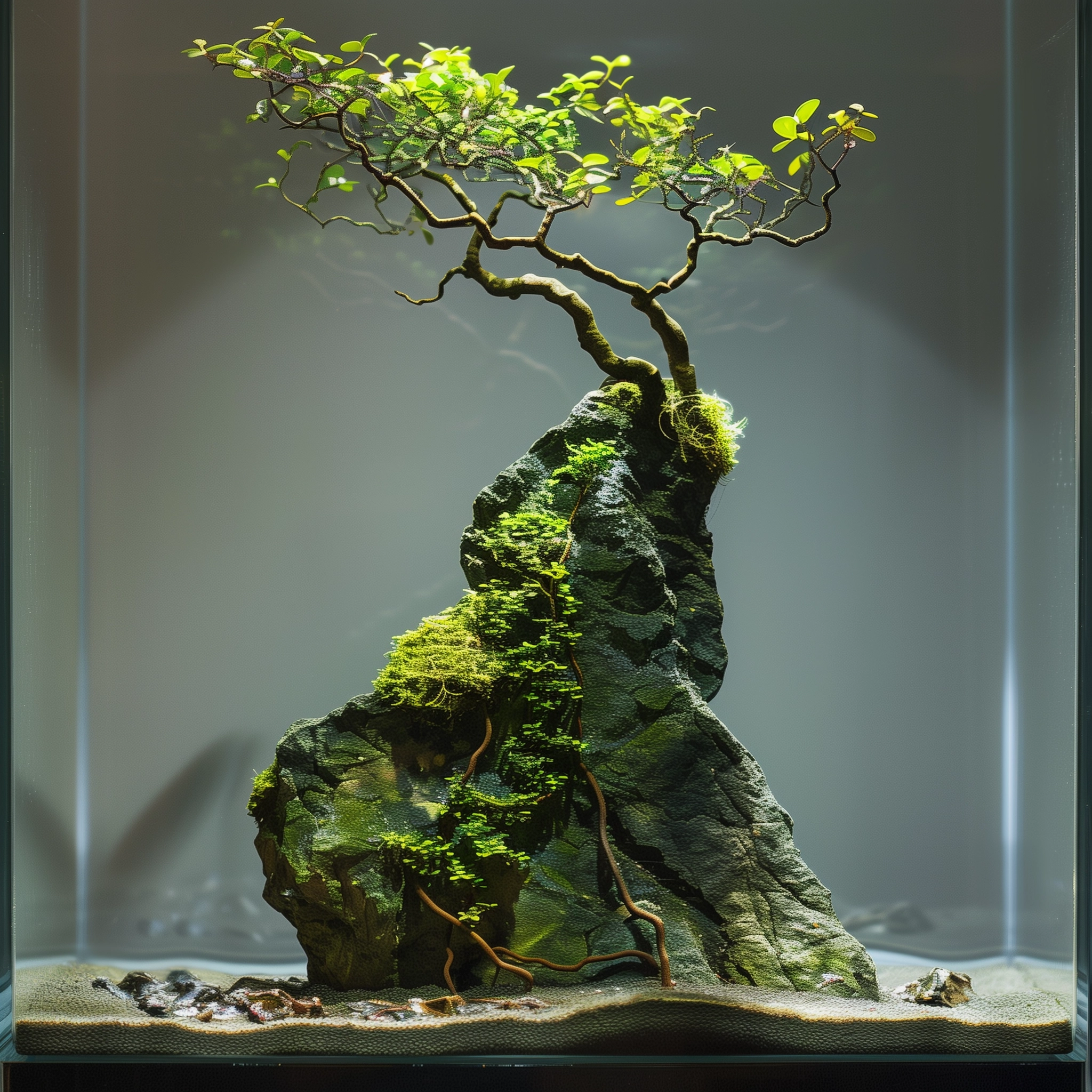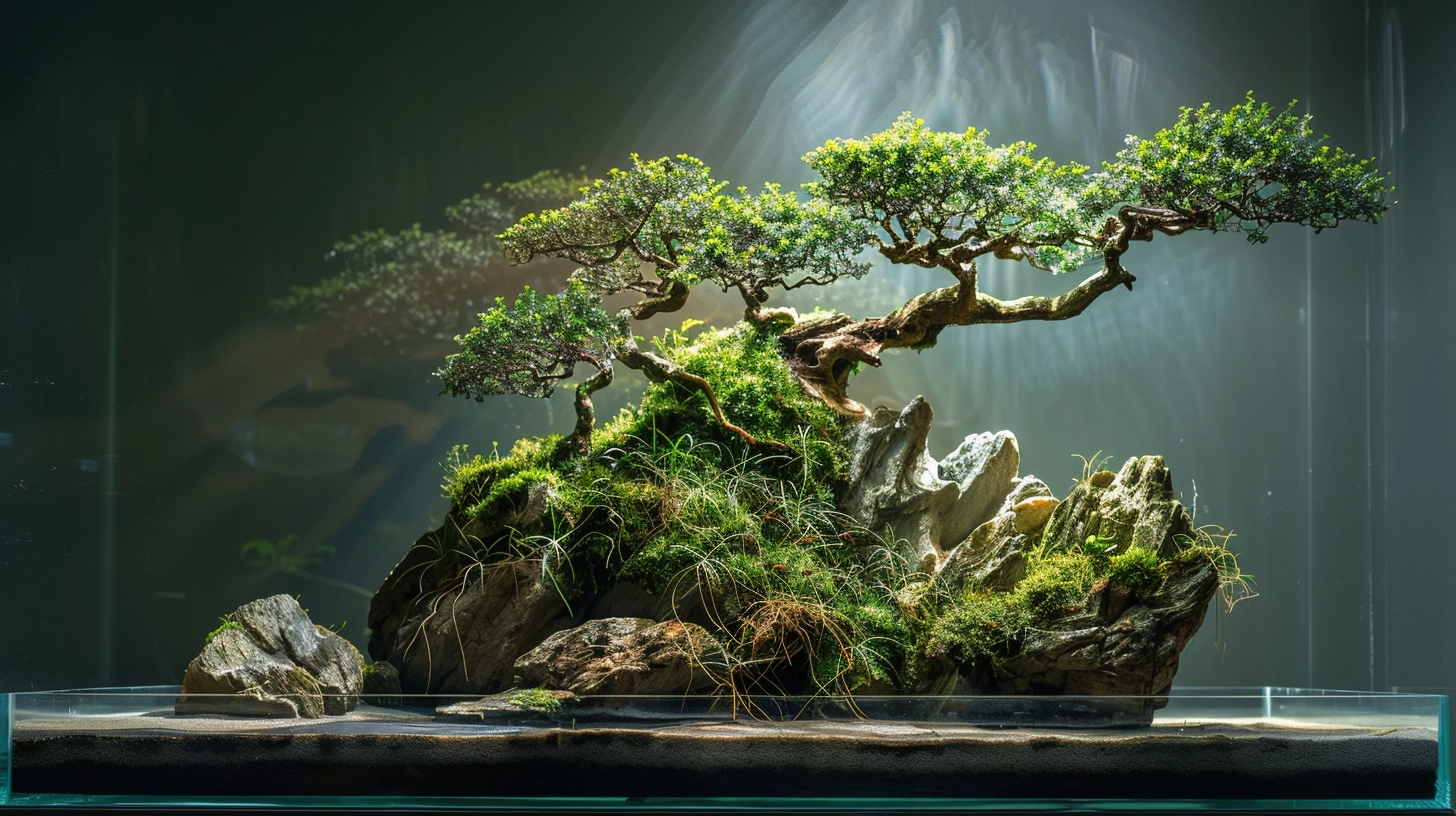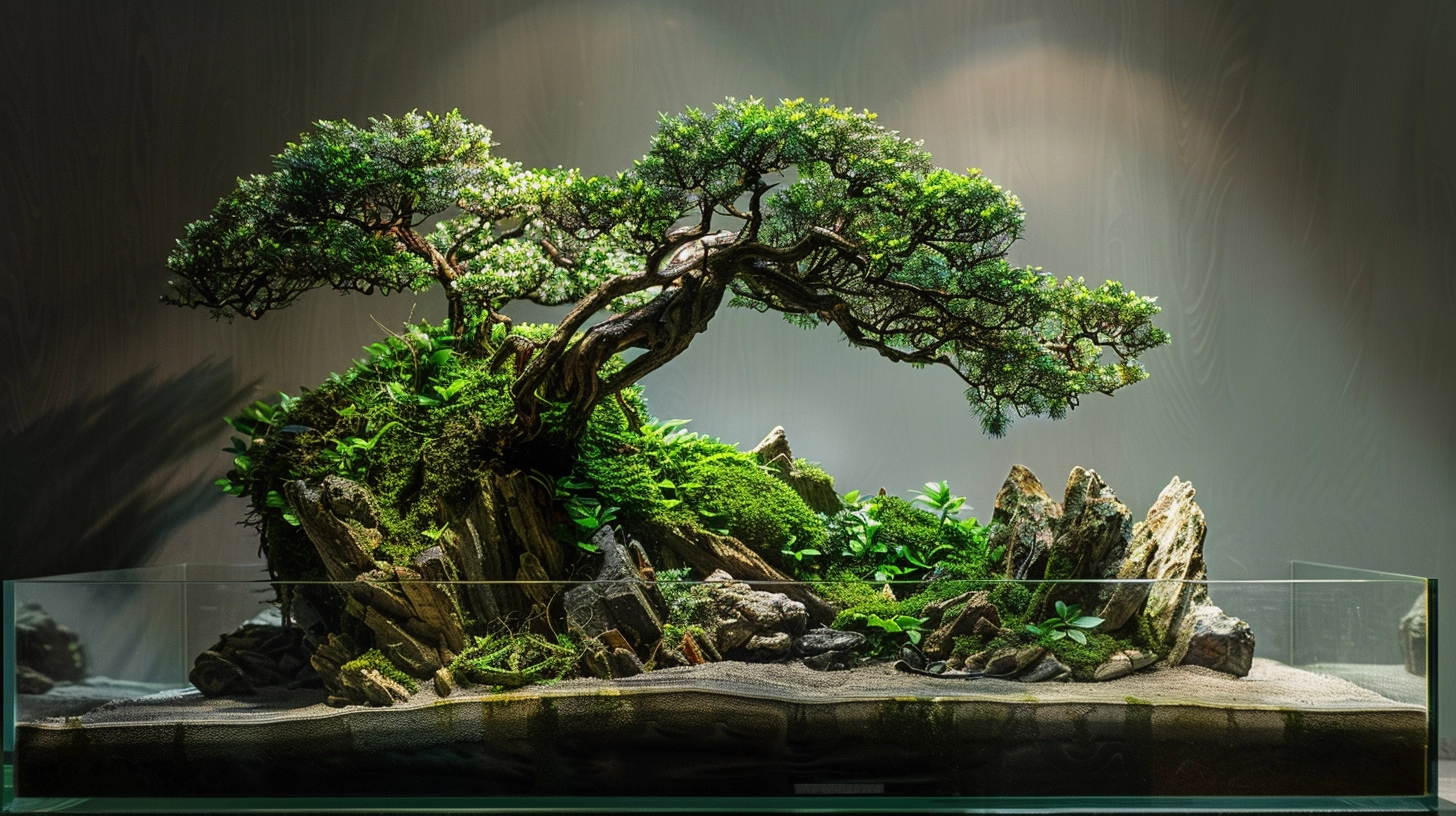The Philosophy of Petitescape:Crafting Vast Landscapes in Miniature
- Yago Alonso Gimenez
- May 3, 2024
- 2 min read
Petitescape embodies a philosophy that seeks to encapsulate the majesty and complexity of natural landscapes within a confined space, allowing for the expression of vast, open worlds on a diminutive scale. The Philosophy of Petitescape:Crafting Vast Landscapes This innovative concept invites enthusiasts to explore the infinite possibilities of creativity, blending various elements from different traditional arts: penjing,bonsai, theming, aquascaping, and modeling miniature art forms. It to create holistic, serene, and dynamic scenes that resonate with the essence of nature itself.

Foundations of Petitescape
The art of Petitescape draws deeply from the rich traditions of penjing and bonsai, where plants and trees are meticulously cultivated to represent miniature scenes of natural beauty. It extends this vision by incorporating elements of aquascaping—the art of arranging aquatic plants, rocks, and substrates in water to create enchanting underwater landscapes. By fusing these disciplines, Petitescape embraces a broader canvas, not limited to the terrestrial or aquatic but encompassing both realms and the spaces in between.
A Canvas for Creativity
Petitescape is more than just a method of arranging natural elements; it's a platform for storytelling, where each creation narrates its own tale of imagined worlds. This art form encourages the artist to think beyond the conventional, merging the tranquility of bonsai forests with the dynamic vitality of aquatic life, the stark beauty of rock formations with the delicate textures of moss and lichen. In doing so, Petitescape transcends the boundaries of each individual practice to offer a genuine, multidimensional experience of nature.
Embracing Miniature Art Forms
At its core, Petitescaping acknowledges and celebrates all forms of miniature art. From the intricate details of a tiny garden to the strategic placement of stones and water to mimic natural rivers or lakes, every element is considered for its contribution to the overall scene. This philosophy respects the individuality of each component while recognizing its part in the larger tableau, crafting scenes that are both harmonious and evocative.
Democratizing Nature's Beauty
A key aspect of Petitescaping is its accessibility. By combining elements from various disciplines, it opens the door for enthusiasts of all backgrounds and skill levels to engage in the creation of miniature landscapes. This inclusivity is central to the philosophy of Petitescaping, which aims to democratize the beauty of nature, making it available to everyone, everywhere. Whether one is drawn to the quiet growth of a bonsai tree, the serene flow of an aquascape, or the detailed composition of a rock garden, Petitescaping offers a way to participate in and appreciate the natural world on a personal level.
Conclusion
The philosophy of Petitescaping is a testament to the power of miniature art forms to evoke the vastness of the natural landscape. It is an invitation to journey through imagined worlds, to find peace and beauty in the details, and to connect with nature in a deep, meaningful way. By fusing the principles of penjing, aquascaping, bonsai, and other miniature arts, Petitescaping offers a unique, holistic approach to the appreciation and cultivation of natural beauty, accessible to all who wish to explore it.









Comments